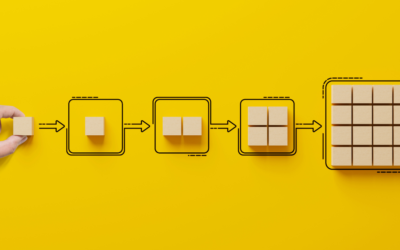In today’s digital age, simplifying complex business processes is not just a preference – it’s a necessity. One area where simplification can lead to significant benefits is electronic invoicing or eInvoicing. By implementing simplified eInvoicing software, organizations can streamline their invoice processes, reduce errors, and achieve greater efficiency. However, to maximize the benefits, it’s essential to follow best practices during implementation.
In this blog post, we’ll explore these best practices to ensure a successful transition to simplified eInvoicing.
-
Set Clear Objectives and Goals: Before diving into eInvoicing implementation, define what you want to achieve. Your objectives could include reducing invoice processing times, minimizing errors, or improving vendor relationships. Setting clear goals will help you measure the success of your implementation.
-
Choose the Right eInvoicing Software: Selecting the right eInvoicing software is a critical step. Consider factors such as scalability, integration capabilities with your existing systems, user-friendliness, and compliance with industry standards and regulations. Look for software that aligns with your organization’s unique needs.
-
Involve Key Stakeholders: Involving key stakeholders, including finance teams, IT personnel, and procurement departments, from the early stages of implementation is essential. Their input can help tailor the software to meet specific departmental requirements and ensure a smoother transition.
-
Ensure Data Accuracy and Cleanliness: Before migrating to eInvoicing, clean and validate your existing data. Inaccurate or incomplete data can lead to issues during implementation. Ensuring data accuracy will minimize disruptions and reduce the likelihood of errors.
-
Provide Training and Support: Offer comprehensive training to all users who will interact with the eInvoicing software. This includes not only end-users but also those responsible for managing the system. Training ensures that everyone understands how to use the software effectively.
-
Define Clear Workflows: Map out your invoicing workflows within the software. Define how invoices will be received, validated, approved, and paid. Well-defined workflows help maintain consistency and ensure that invoices follow the correct path.
-
Test Thoroughly: Conduct thorough testing before fully implementing eInvoicing. Test various scenarios to identify and resolve any issues or bottlenecks. This can include testing with sample invoices and conducting end-to-end testing with real invoices.
-
Monitor and Optimize: Once eInvoicing is in place, establish monitoring mechanisms to track its performance. Regularly review key metrics like processing times, error rates, and vendor satisfaction. Use this data to identify areas for improvement and optimization.
-
Ensure Compliance: Stay informed about eInvoicing regulations and compliance standards in your industry or region. Ensure that your eInvoicing software aligns with these requirements to avoid legal and financial repercussions.
-
Foster Vendor Collaboration: Collaborate with your vendors and suppliers to promote eInvoicing adoption. Offer guidance and support to help them transition to the new system smoothly. The more vendors you have using eInvoicing, the greater the benefits for your organization.
Conclusion
Implementing simplified eInvoicing software can transform your accounts payable processes, saving time, reducing costs, and improving accuracy. By following these best practices, you’ll set the stage for a successful implementation that brings your organization closer to achieving its financial and operational goals. Simplify your invoicing processes and embrace the future of efficient financial operations with eInvoicing software that works for you.
INTERESTED TO KNOW MORE?
CLICK THE BELOW BUTTON TO SCHEDULE A DEMO WITH US!

